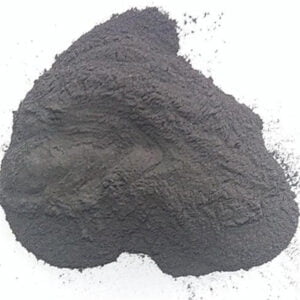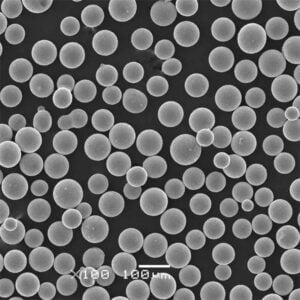Použití technologie MIM v automobilových dílech
Obsah
Představte si výrobní proces, který hladce kombinuje tvarovou složitost vstřikování plastů s výjimečnou pevností a odolností kovu. To není science fiction, ale realita vstřikování kovů (Metal Injection Molding).MIM), technologie, která rychle mění automobilový průmysl. Připoutejte se, milovníci převodovek, protože se chystáme proniknout do fascinujícího světa MIM a prozkoumat jeho hluboký dopad na výrobu automobilů budoucnosti.

Odhalení kouzla MIM
Podstatou technologie MIM je zajímavá směs kovových prášků a polymerních pojiv. Zde je přehled klíčových hráčů v tomto složitém tanci:
- Kovové prášky: Tyto jemnozrnné kovové částice o velikosti obvykle od 1 do 150 mikrometrů tvoří základ procesu MIM. Konkrétní typ použitého kovového prášku významně ovlivňuje vlastnosti výsledného dílu. Prozkoumejme rozmanitý výběr těchto kovových zázraků:
Běžné kovové prášky pro aplikace MIM
| Kovový prášek | Popis | Vlastnosti | Aplikace v automobilových dílech |
|---|---|---|---|
| Nízkolegovaná ocel | Pracovní kůň MIM, který nabízí rovnováhu mezi cenovou dostupností, pevností a možností obrábění. | Vysoká pevnost, dobrá odolnost proti opotřebení, snadno dostupné. | Ozubená kola, řetězová kola, spojovací materiál, součásti motoru. |
| Nerezová ocel | Je proslulý svou odolností proti korozi, takže je ideální pro drsné prostředí automobilového průmyslu. | Vynikající odolnost proti korozi, dobrá pevnost, k dispozici jsou biokompatibilní třídy. | Součásti palivového systému, výfukové díly, kryty snímačů. |
| Slitiny na bázi niklu | Šampioni v aplikacích při vysokých teplotách, kteří nabízejí výjimečnou pevnost a odolnost proti oxidaci. | Výjimečná pevnost při zvýšených teplotách, dobrá odolnost proti korozi, vysoká cena. | Součásti turbodmychadla, díly ventilového rozvodu, výfukové potrubí. |
| Hliníkové slitiny | Lehcí šampioni, cenění pro svůj poměr pevnosti a hmotnosti a vynikající tepelnou vodivost. | Lehký, dobrá pevnost, dobrá tepelná vodivost, složitější proces odbedňování. | Součásti motoru, díly převodovky, brzdové třmeny. |
| Slitiny mědi | Vysoce vodivé superhvězdy, ideální pro aplikace vyžadující účinný přenos tepla. | Vynikající elektrická a tepelná vodivost, dobrá obrobitelnost, náchylnost k oxidaci. | Elektrické konektory, chladiče, pouzdra. |
| Titanové slitiny | Ztělesnění pevnosti a lehké konstrukce, ale za příplatek. | Výjimečný poměr pevnosti k hmotnosti, vynikající odolnost proti korozi, k dispozici biokompatibilní třídy, vysoká cena. | Vysoce výkonné součásti motoru, díly zavěšení. |
| Nástrojové oceli | Drsňáci pro náročné aplikace s vynikající odolností proti opotřebení. | Výjimečná odolnost proti opotřebení, dobrá tvrdost, pro optimální výkon vyžaduje dodatečné zpracování. | Řezné nástroje, ozubená kola, vačky, součásti ventilů. |
| Magnetické slitiny | Mistři magnetismu, kteří mají zásadní význam pro komponenty vyžadující přesné magnetické vlastnosti. | Přizpůsobené magnetické vlastnosti, dobrá obrobitelnost, vyžaduje následné zpracování pro optimální výkon. | Součásti snímačů, jádra elektromagnetů, hřídele rotorů. |
| Žáruvzdorné slitiny | Tepelné štíty proti peklu, ideální pro odolávání extrémním teplotám. | Výjimečná pevnost při vysokých teplotách, dobrá odolnost proti oxidaci, vyžaduje specializované zpracování. | Tepelné štíty motoru, součásti výfuku, díly turbodmychadla. |
| Slitiny drahých kovů | Dotek luxusu, který se používá pro specializované aplikace vyžadující vysokou elektrickou vodivost nebo odolnost proti korozi. | Výjimečná elektrická vodivost, vynikající odolnost proti korozi, velmi vysoká cena. | Elektrické kontakty, konektory, pouzdra snímačů (omezené použití vzhledem k ceně). |
- Polymerní pojiva: Ty fungují jako dočasné lepidlo, které drží částice kovového prášku pohromadě během procesu formování. Po vytvarování je pojivo odstraněno procesem odstraňování vazby a zůstane po něm kovová součást téměř síťového tvaru.
The MIM Výroba Marvel
Proces MIM lze přirovnat k pečlivě sestavenému baletu, jehož každý krok přispívá k výslednému dílu. Podívejte se na podmanivou cestu automobilového dílu vyrobeného metodou MIM:
- Míchání a tvarování: Kovový prášek a polymerní pojivo jsou přesně smíchány tak, aby vznikla surovina s optimálními tokovými vlastnostmi. Tato směs se pak vstřikuje do dutiny formy pod vysokým tlakem, což napodobuje známý proces vstřikování plastů.
- Debinding: Kouzlo se rozvíjí! Pečlivě kontrolovaným tepelným nebo chemickým procesem se z výlisku pečlivě odstraní pojivo. Zůstane tak křehká, porézní kovová struktura.
- Spékání: Nyní přichází horko! Odjehlený díl je vystaven vysokým teplotám, které se obvykle blíží bodu tání kovového prášku. Tímto procesem se díl zpevní tím, že se kovové částice spojí dohromady a vytvoří se téměř síťová součást s výjimečnými vlastnostmi.
- Sekundární operace (volitelné): V závislosti na konkrétních požadavcích aplikace může být díl MIM podroben dalším procesům, jako je obrábění, tepelné zpracování nebo povrchová úprava, aby se dosáhlo požadovaných konečných rozměrů, výkonnostních charakteristik a estetického vzhledu.
Symfonie výhod: Proč MIM Vládne nejvyšší
Podmanivá kombinace schopností společnosti MIM jí zajistila prestižní místo v arzenálu automobilového průmyslu. Zde je harmonický sbor předností, díky nimž MIM skutečně mění pravidla hry:
- Složité geometrie: Na rozdíl od tradičního obrábění je MIM vynikající při výrobě složitých tvarů s úzkými tolerancemi, což minimalizuje potřebu více komponentů a zjednodušuje montážní procesy. Představte si, že jediné ozubené kolo MIM nahradí složitou sestavu obráběných dílů, což povede k lehčí a efektivnější konstrukci.
- Tvary blízké síti: Díly MIM vznikají v podobě blízké konečnému tvaru a vyžadují minimální sekundární obrábění. To znamená výraznou úsporu nákladů, snížení plýtvání materiálem a zrychlení výrobních cyklů ve srovnání s tradičními subtraktivními výrobními technikami.
- Hromadná výroba: MIM se daří v prostředí velkosériové výroby. Jakmile je forma vytvořena, může MIM vyrábět díly s výjimečnou konzistencí a opakovatelností, což zajišťuje stálý přísun vysoce kvalitních dílů pro montážní linky automobilů.
- Všestrannost materiálu: Jak jsme již uvedli dříve, rozmanitý výběr kovových prášků dostupných pro MIM umožňuje vytvářet díly s širokou škálou vlastností, od robustní pevnosti oceli až po lehký půvab hliníku. Tato flexibilita umožňuje konstruktérům přizpůsobit materiál specifickým potřebám každé automobilové aplikace.
- Svoboda designu: MIM otevírá svět konstrukčních možností. Zapomeňte na omezení tradiční výroby; do dílů MIM lze zakomponovat složité vnitřní prvky, komplikované kanály, a dokonce i mřížky snižující hmotnost, což posouvá hranice automobilového designu a funkčnosti.
- Šetrnost k životnímu prostředí: V porovnání s tradičními obráběcími procesy, při nichž vzniká velké množství kovového odpadu, je MIM šetrnější k životnímu prostředí. Díky téměř čistým tvarům a minimálnímu odpadu z materiálu přispívá MIM k udržitelnějšímu ekosystému výroby automobilů.
Kontrapunkt: Odhalení omezení MIM
Ačkoli MIM zpívá mocnou hymnu výhod, je nezbytné si uvědomit jeho omezení, aby bylo zajištěno informované rozhodování. Zde je pohled na druhou stranu mince:
- Náklady na lisování: Počáteční investice do návrhu a výroby forem MIM může být značná. To může být překážkou pro malosériovou výrobu nebo prototypy.
- Omezení velikosti dílů: Velikost a složitost dílů, které lze efektivně vyrábět pomocí MIM, je omezena. Velmi velké nebo extrémně složité díly mohou být vhodnější pro alternativní výrobní metody.
- Povrchová úprava: Součástky MIM mohou mít ve srovnání s obráběnými součástmi mírně drsnější povrch. K dosažení požadované estetické nebo funkční povrchové úpravy může být nutné použít techniky následného zpracování, jako je leštění nebo pokovování.
- Omezení materiálu: Přestože MIM nabízí širokou škálu možností, nemusí být vhodný pro všechny požadované vlastnosti materiálu. Například u některých slitin s velmi vysokou pevností nebo u slitin vyžadujících specifickou strukturu zrna může být obtížné dosáhnout pomocí MIM.
Symfonie aplikací
Podmanivá melodie výhod MIM rezonuje v širokém spektru aplikací v automobilovém průmyslu. Zde je několik významných příkladů, kde MIM přepisuje scénář výroby automobilových dílů:
Součásti motoru: Od složitých zdvihátek ventilů a lehkých pístů až po robustní vačkové hřídele a odolné ojnice - MIM mění srdce automobilu. Díky své schopnosti vyrábět téměř čisté tvary s výjimečnou pevností a odolností proti opotřebení je pro tyto náročné aplikace ideální.
Díly převodovky: Ozubená kola, synchronizační kroužky a další součásti převodovek se stále častěji vyrábějí pomocí technologie MIM. Tento proces zajišťuje přesné tolerance, vysokou pevnost a odolnost proti opotřebení, které jsou nezbytné pro hladký a účinný přenos výkonu.
Součásti palivového systému: Díky odolnosti proti korozi a schopnosti odolávat vysokým tlakům se MIM skvěle hodí pro vstřikovače paliva, palivové lišty a další součásti palivového systému automobilů.
Systémy řízení a zavěšení: Technologie MIM si nachází cestu do kloubů řízení, součástí zavěšení a dalších dílů, které vyžadují rovnováhu mezi pevností, lehkou konstrukcí a složitou geometrií.
Součásti karoserie a podvozku: Od lehkých držáků a příchytek až po robustní konstrukční prvky, MIM se postupně prosazuje na karoseriích a podvozcích automobilů.

FAQ
Podívejme se na několik často kladených otázek, abychom se ujistili o úplném pochopení úlohy MIM v automobilovém průmyslu:
| Otázka | Odpovědět |
|---|---|
| Jaké jsou dopady MIM na náklady ve srovnání s tradiční výrobou? | Ačkoli počáteční náklady na formy mohou být značné, MIM často vede k nižším celkovým nákladům na velkosériovou výrobu díky tvarům blízkým čistým, minimálnímu plýtvání materiálem a rychlejším výrobním cyklům. |
| Je metoda MIM vhodná pro výrobu prototypů automobilových dílů? | MIM může být vhodnou volbou pro výrobu prototypů složitých automobilových dílů, zejména pokud je zapotřebí více iterací. Je však třeba zvážit počáteční náklady na formu v porovnání s požadovaným počtem prototypů. Aditivní výrobní techniky, jako je 3D tisk, mohou být rychlejší a nákladově efektivnější variantou pro jednotlivé prototypy. |
| Jak si MIM stojí v porovnání s jinými technikami tváření kovů, jako je odlévání nebo kování? | MIM má oproti odlévání a kování několik výhod. Vyniká tím, že vyrábí téměř čisté tvary s úzkými tolerancemi, což minimalizuje potřebu rozsáhlého následného zpracování. Kromě toho MIM umožňuje vytvářet složité geometrie, které by mohly být náročné nebo nemožné dosáhnout odléváním nebo kováním. Odlévání a kování však mohou být vhodnější pro velmi velké nebo velkosériové výrobní série jednodušších tvarů, a to z důvodu nižších počátečních nákladů na nástroje. |
| Jaké jsou budoucí trendy technologie MIM v automobilovém průmyslu? | S dalším vývojem technologie MIM lze očekávat vývoj nových kovových prášků s ještě specializovanějšími vlastnostmi. Kromě toho pokrok v procesech odstraňování vazby a slinování pravděpodobně povede k vytváření dílů MIM s lepší povrchovou úpravou a ještě větší rozměrovou přesností. Integrace MIM s dalšími aditivními výrobními technikami by také mohla otevřít nové možnosti výroby komplexních dílů. |
závěr
Podmanivá kombinace schopností společnosti MIM ji staví do pozice mocné síly v neustálém hledání inovací v automobilovém průmyslu. Od výroby složitých součástí motoru až po tvarování lehkých dílů karoserie - MIM nově definuje způsob navrhování a výroby automobilových dílů. Vzhledem k tomu, že tato technologie se stále zdokonaluje a rozšiřuje svůj záběr, můžeme očekávat, že MIM bude hrát ještě významnější roli v symfonii dokonalosti automobilového průmyslu a bude hnací silou při vytváření lehčích, pevnějších a účinnějších vozidel pro budoucí cesty.
Sdílet na
MET3DP Technology Co., LTD je předním poskytovatelem řešení aditivní výroby se sídlem v Qingdao v Číně. Naše společnost se specializuje na zařízení pro 3D tisk a vysoce výkonné kovové prášky pro průmyslové aplikace.
Dotaz k získání nejlepší ceny a přizpůsobeného řešení pro vaše podnikání!
Související články

Vysoce výkonné segmenty lopatek trysek: Revoluce v účinnosti turbín díky 3D tisku z kovu
Přečtěte si více "O Met3DP
Nedávná aktualizace
Náš produkt
KONTAKTUJTE NÁS
Nějaké otázky? Pošlete nám zprávu hned teď! Po obdržení vaší zprávy obsloužíme vaši žádost s celým týmem.

Kovové prášky pro 3D tisk a aditivní výrobu
SPOLEČNOST
PRODUKT
kontaktní informace
- Město Qingdao, Shandong, Čína
- [email protected]
- [email protected]
- +86 19116340731
















